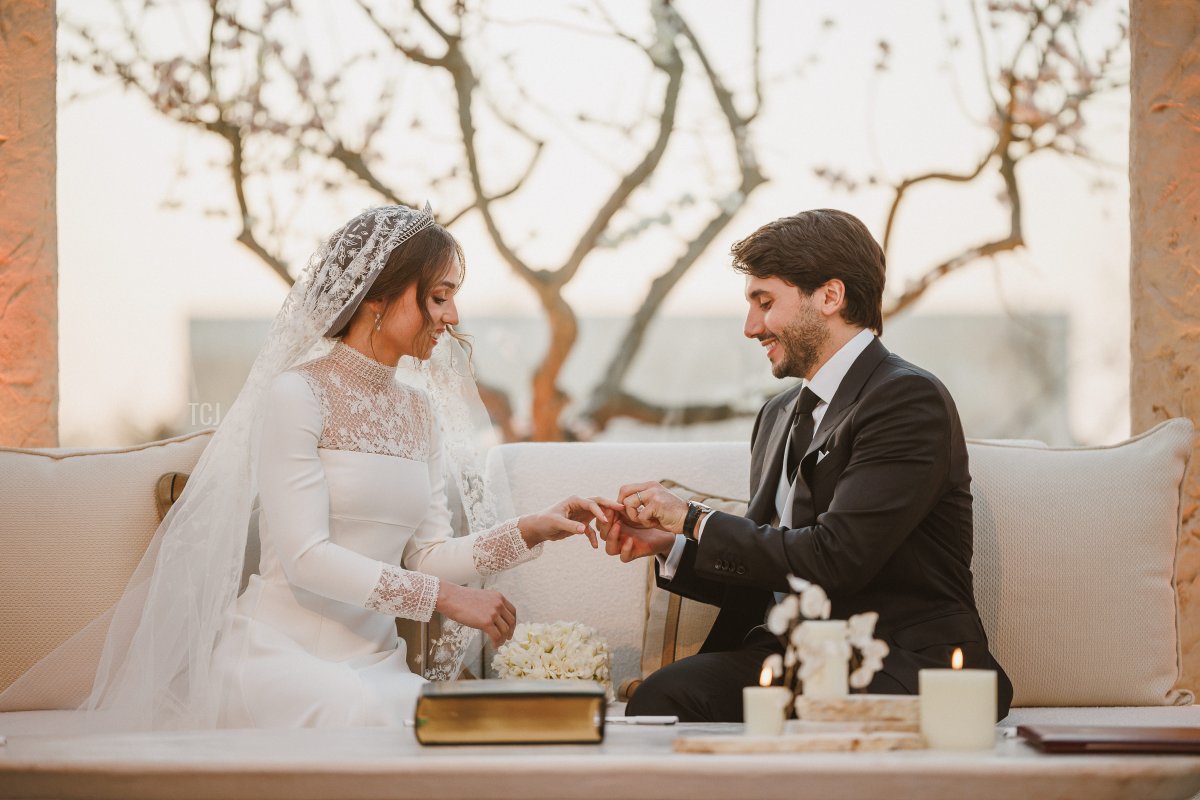
It’s a big day for the royal family of Jordan: Crown Prince Hussein, the son and heir of King Abdullah II, is marrying his fiancé, Rajwa Al Saif. Ahead of their wedding ceremony, we’ve got a look back at some of the glittering royal wedding tiaras and jewels worn for Jordanian royal weddings in decades past.
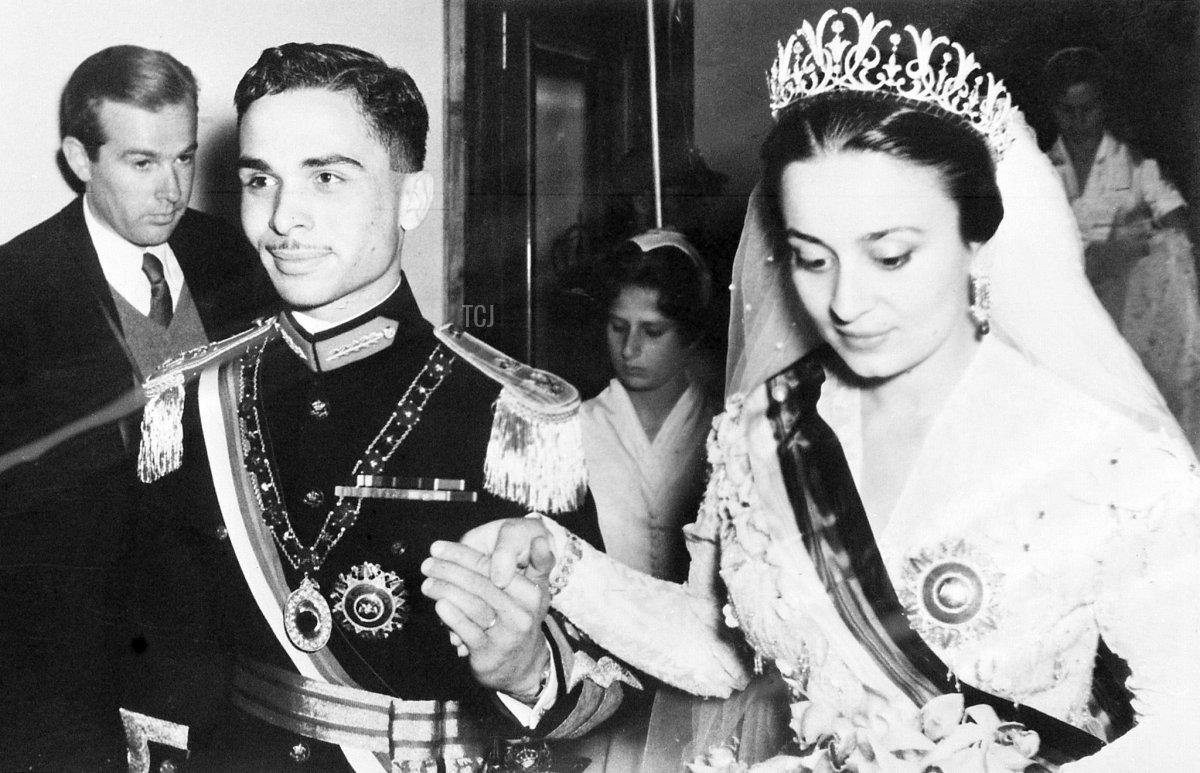
We’ll start with Crown Prince Hussein’s grandfather, King Hussein of Jordan, who reigned from 1952 until his death in 1999. King Hussein was married four times. His first wife, Dina bint Abdul-Hamid, was a distant cousin who was born and raised in Egypt and educated in England. The couple met in London in 1952, the year he ascended to the throne, as part of an arranged relationship. They were married in Amman on April 22, 1955, when Hussein was 19 and Dina was 25.
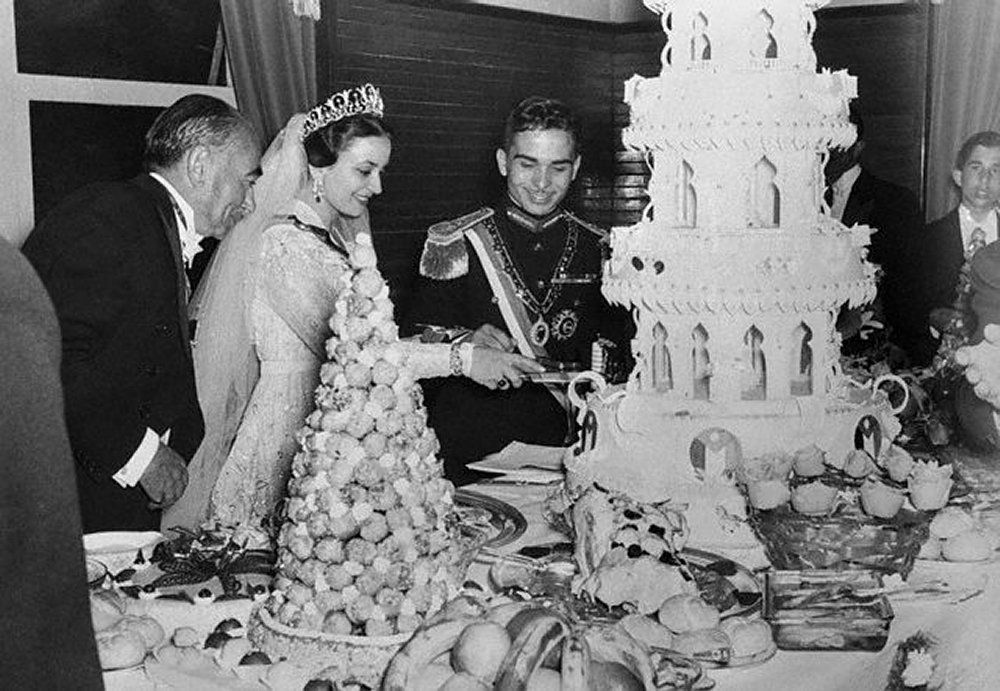
For their wedding, Dina wore a diamond tiara with a scroll and lily design with a white lace gown that had been made in Paris. She became Queen of Jordan on their marriage, which ultimately was short-lived. Queen Dina gave birth to the couple’s only child, Princess Alia bint Hussein, in February 1956. Hussein and Dina separated that October and divorced in June 1957. Afterward, Dina used the title of princess, even after her second marriage, until her death in 2019.
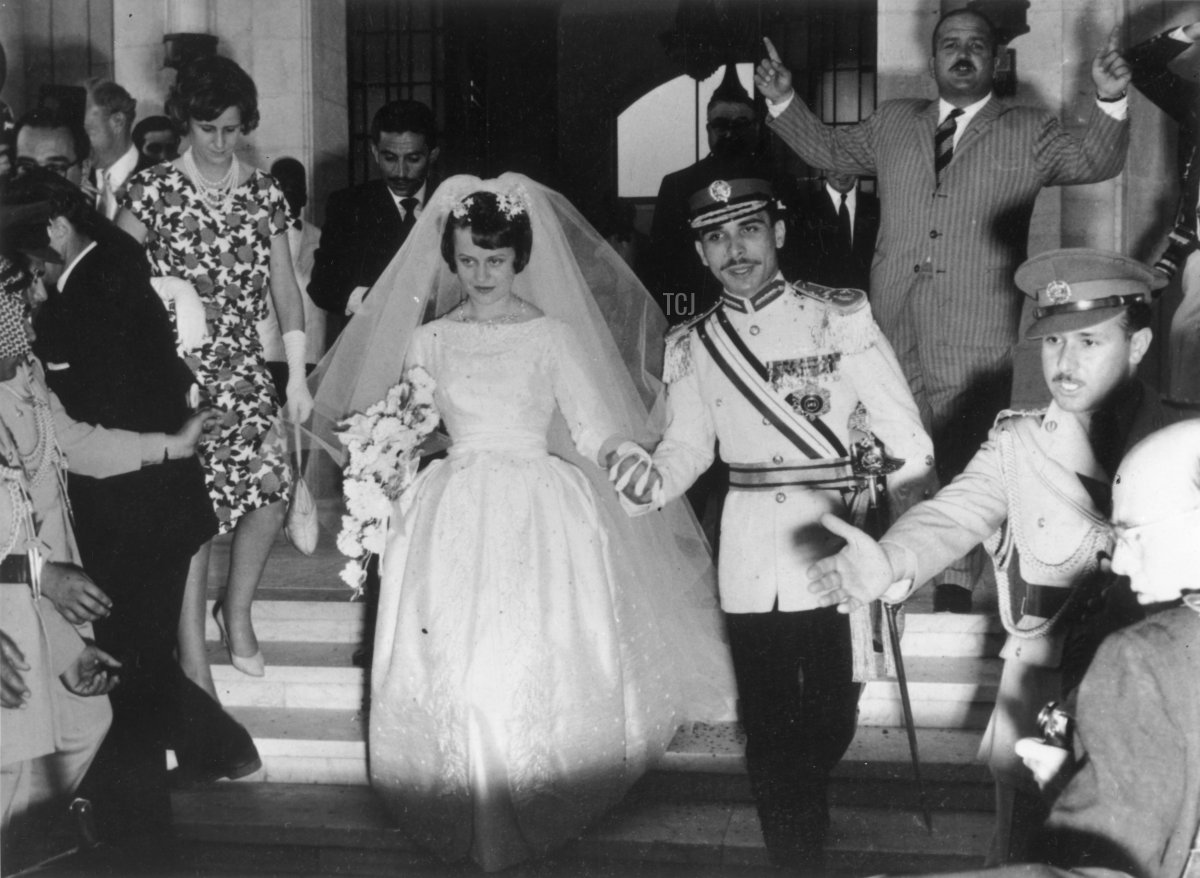
On May 25, 1961, King Hussein married his second wife, Antoinette “Toni” Gardiner. The daughter of a British army officer, Toni’s childhood had taken her to various countries. According to press reports from the time of her engagement to the King, Toni had traveled to Amman with her parents in January 1960. Some reports claim that Toni met King Hussein while working as a production assistant on the film Lawrence of Arabia, which was largely filmed in Jordan, but filming on that production began after the couple’s engagement was announced. It seems more likely that they met through her father’s work as a military advisor to Britain’s training mission in Jordan.
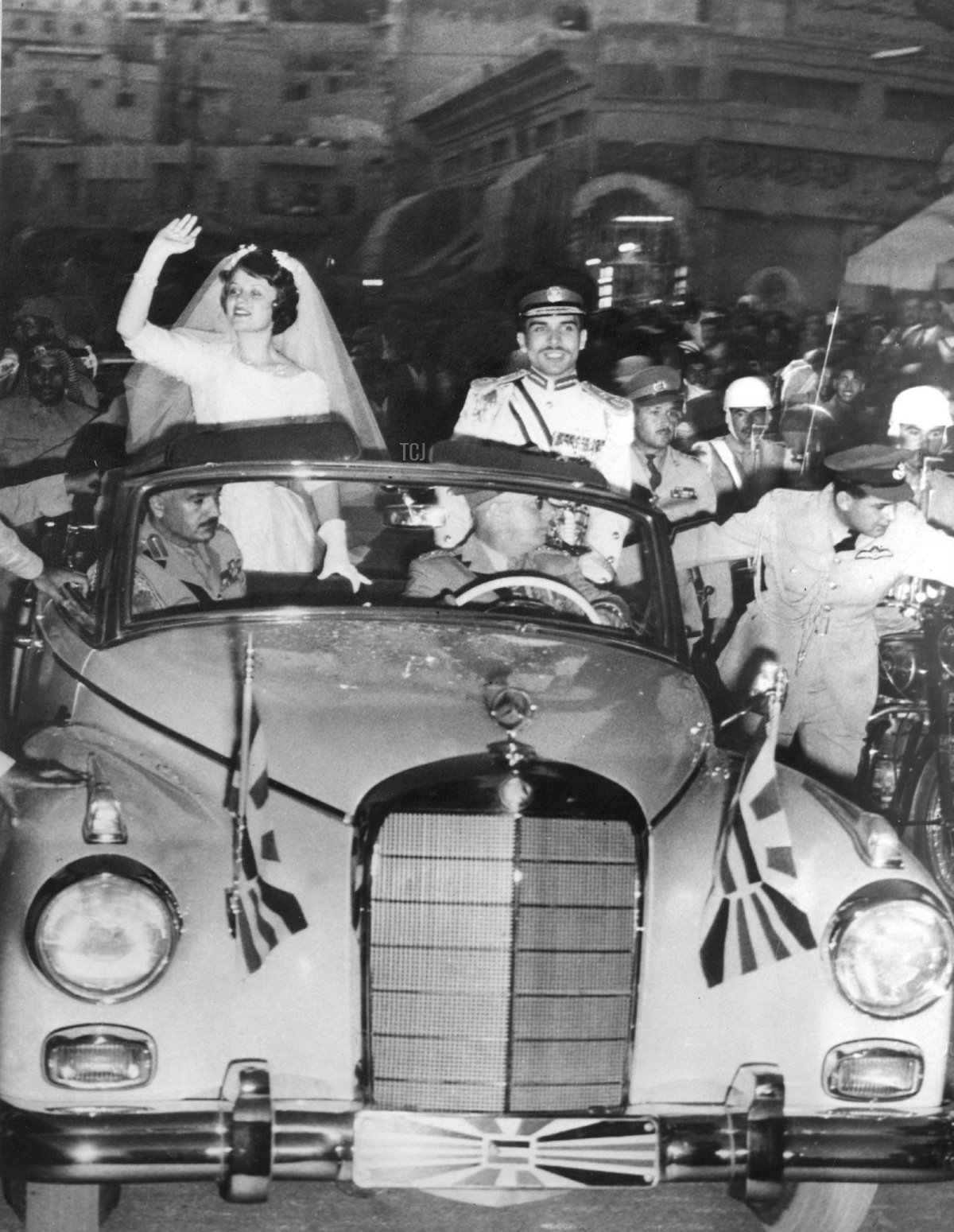
Toni took on a new name, Muna Al-Hussein, when she converted to Islam ahead of the couple’s wedding. Muna wore a white dress with flowers in her hair rather than a tiara for their wedding ceremony, which took place at Zahran Palace, the home of King Hussein’s mother, Queen Zein, on May 25, 1961. King Hussein was 25, and his new wife was 21. Initially, it was decided that Muna would not have a title, but on the day that their first child, Abdullah, was born in January 1962, she was upgraded to the title of Princess Muna. (That baby is now King Abdullah II of Jordan.) Hussein and Muna had three more children, Prince Faisal and twins Princess Aisha and Princess Zein. The couple divorced in December 1972. Princess Muna has continued to live and work in Jordan in the decades since, focusing on nursing initiatives and supporting her son since his accession in 1999.
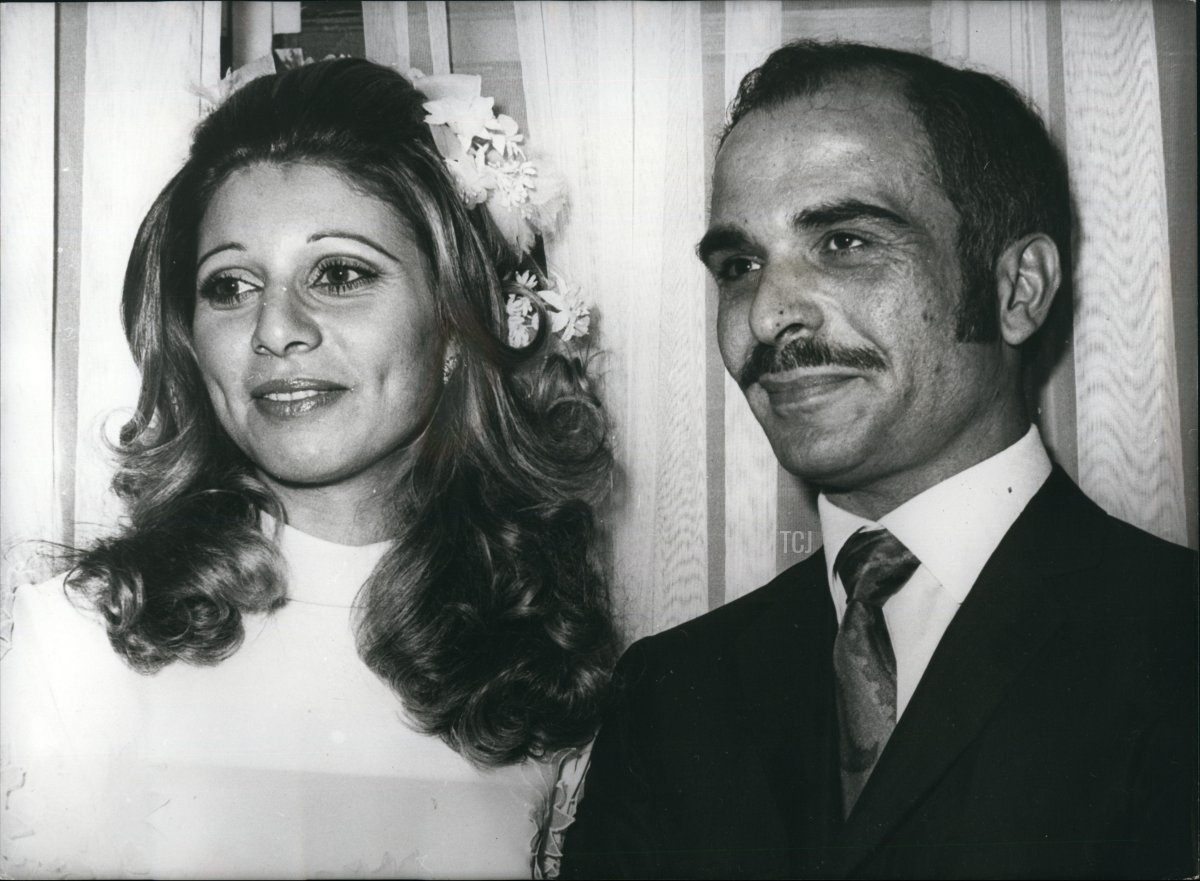
Three days after his divorce from Princess Muna, 37-year-old King Hussein married for a third time. He wed 23-year-old Alia Toukan, a Royal Jordanian Airlines public relations representative who was also the daughter of a Jordanian diplomat. The wedding, which was held at her father’s house, was held on December 24, 1972. The ceremony was strictly private, but a few photographs were released, showing Alia wearing white with flowers in her hair. She became Queen Alia of Jordan after the wedding ceremony.
King Hussein and Queen Alia had two children together, Princess Haya and Prince Ali. They also adopted a third child, Abir Muhaisen, whose mother had been killed when a plane crashed into a refugee camp near Amman’s airport. Sadly, Queen Alia would meet a similar fate. She died in a helicopter crash in Amman on February 9, 1977.
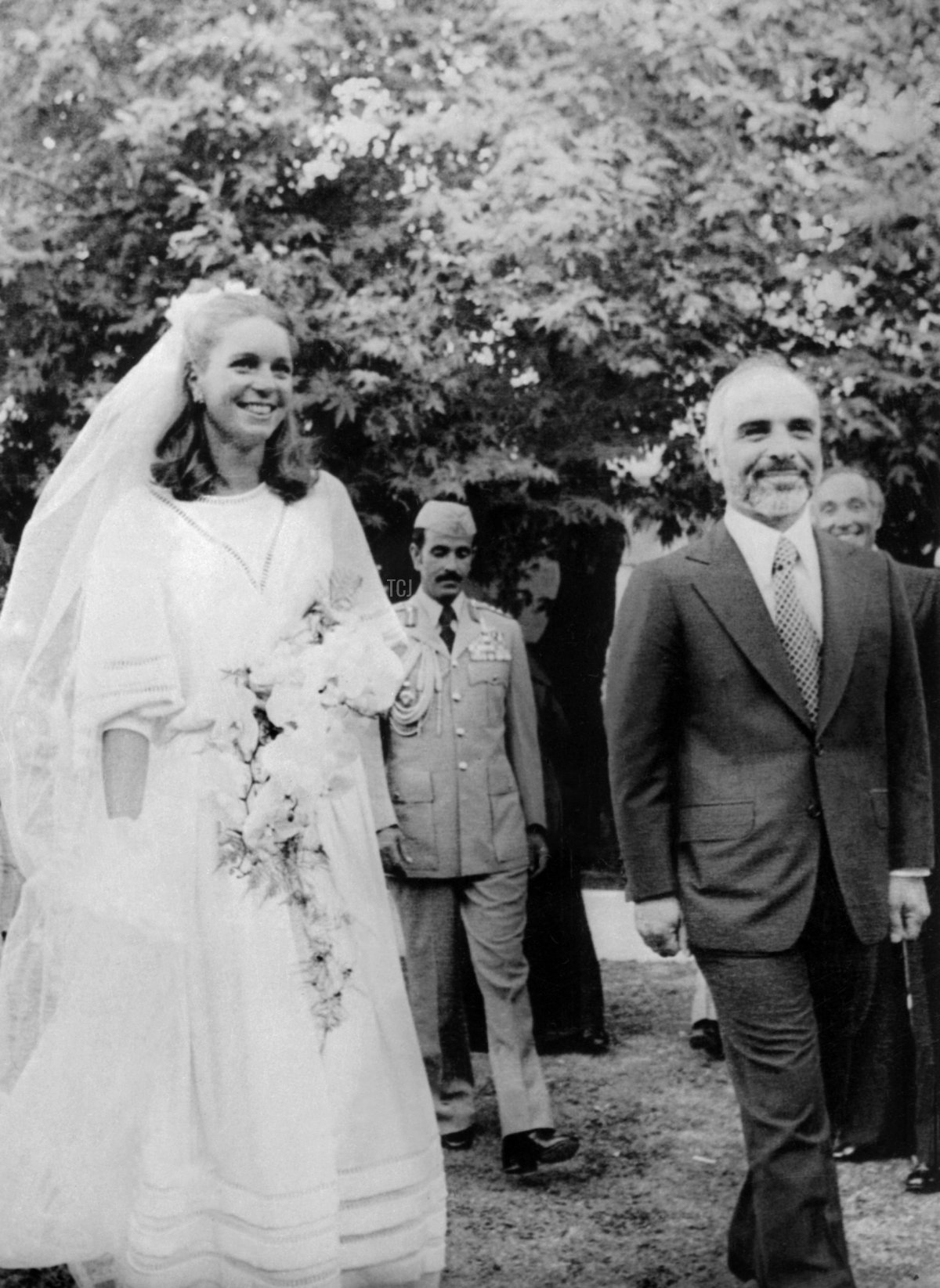
Several months after Queen Alia’s death, in the winter of 1977-78, King Hussein began a romance with the American-born Lisa Halaby, the daughter of one of his friends. Like Queen Alia before her, Lisa, an architect, worked for Royal Jordanian Airlines. King Hussein, 42, and Lisa, 26, announced their engagement in May 1978. Lisa converted to Islam and took on the new name “Noor Al-Hussein” before their wedding, which took place in Amman on June 15, 1978.
For the wedding, which took place at Zahran Palace, home of King Hussein’s mother, Queen Zein, Noor wore a white Christian Dior dress with diamond earrings and a diamond bracelet for the ceremony, with flowers in her hair rather than a tiara to secure her veil. A royal proclamation issued after the wedding announced that the bride would have the title of Queen Noor. The marriage lasted for more than two decades, until King Hussein’s death in 1999. The couple had four children: Prince Hamzah, Prince Hashim, Princess Iman, and Princess Raiyah.
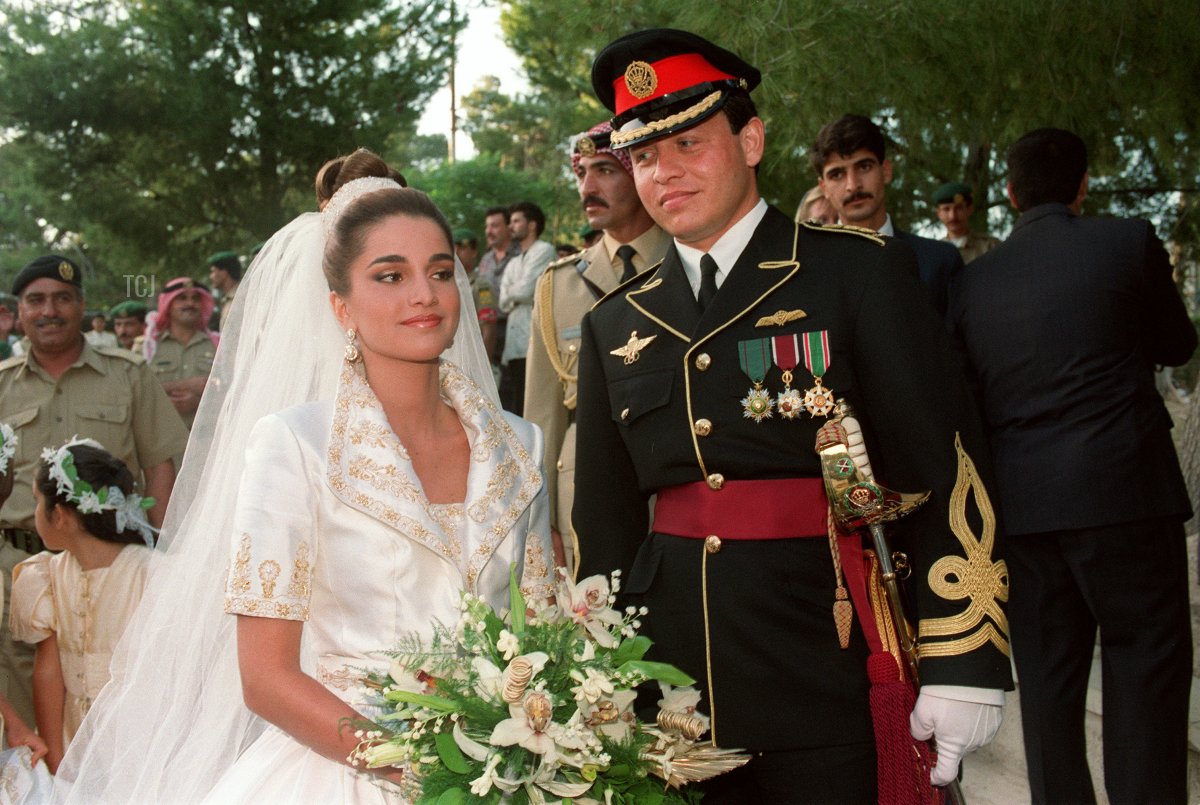
King Hussein’s eldest son, Prince Abdullah, married Rania Al-Yassin in Amman on June 10, 1993, six months after meeting her at a dinner party. Even though Abdullah was the King’s first son, he was not the crown prince at this point in time. Jordanian law allows the monarch to be succeeded either by his eldest son or one of his brothers, and he can decide which person to appoint as his successor. King Hussein changed his heir four times during his reign. His younger brother, Prince Muhammad, was the heir from 1952 until 1962; his eldest son, Prince Abdullah, was crown prince from his birth in 1962 until 1965; another younger brother, Prince Hassan, was made heir to try to calm instability in 1965 and held the role until 1999; and finally, on January 25, 1999, Hussein named Prince Abdullah as his heir once more, just days before his death from cancer. (The decision was reportedly a major surprise to everyone involved, including Abdullah himself.)
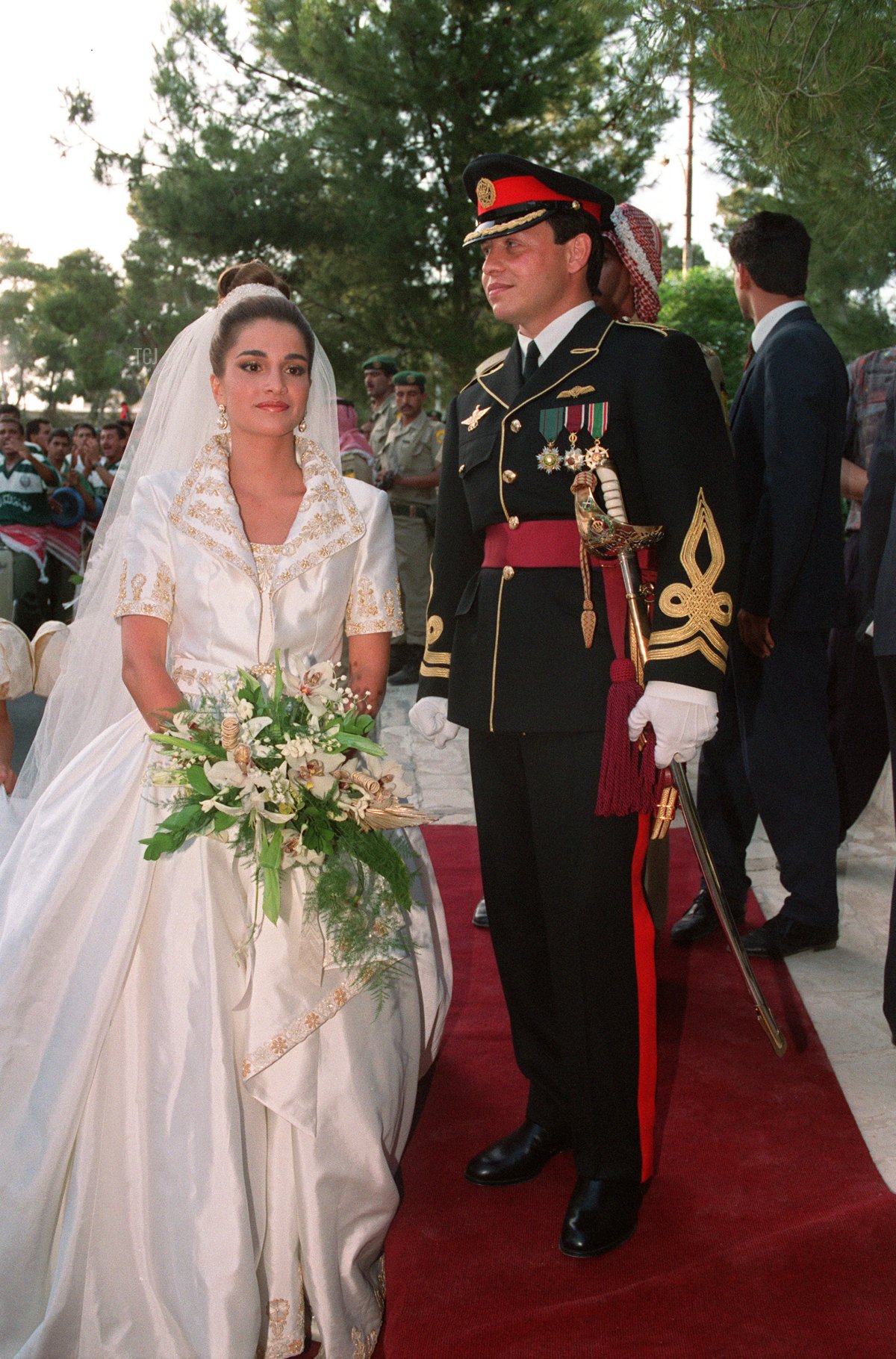
So when 31-year-old Abdullah and 22-year-old Rania were married in 1993, he wasn’t expected to inherit the throne. (The fact that his mother was not an Arab was a long-standing public sticking point.) Even so, their wedding was a glittering affair. Abdullah wore a military uniform, and Rania gleamed in a grand white wedding gown with golden embroidery.
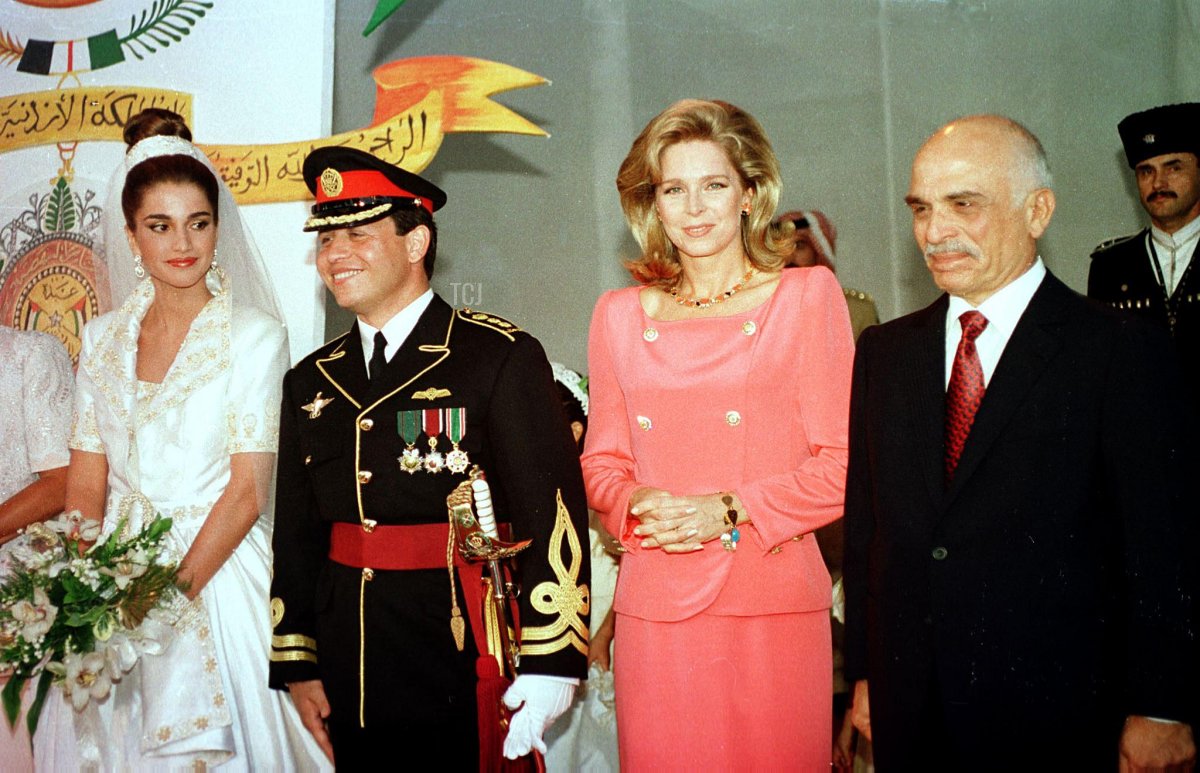
The wedding took place at Zahran Palace, home of Prince Abdullah’s grandmother, Queen Zein. Here, Abdullah and Rania pose with his father, King Hussein, and his stepmother, Queen Noor.
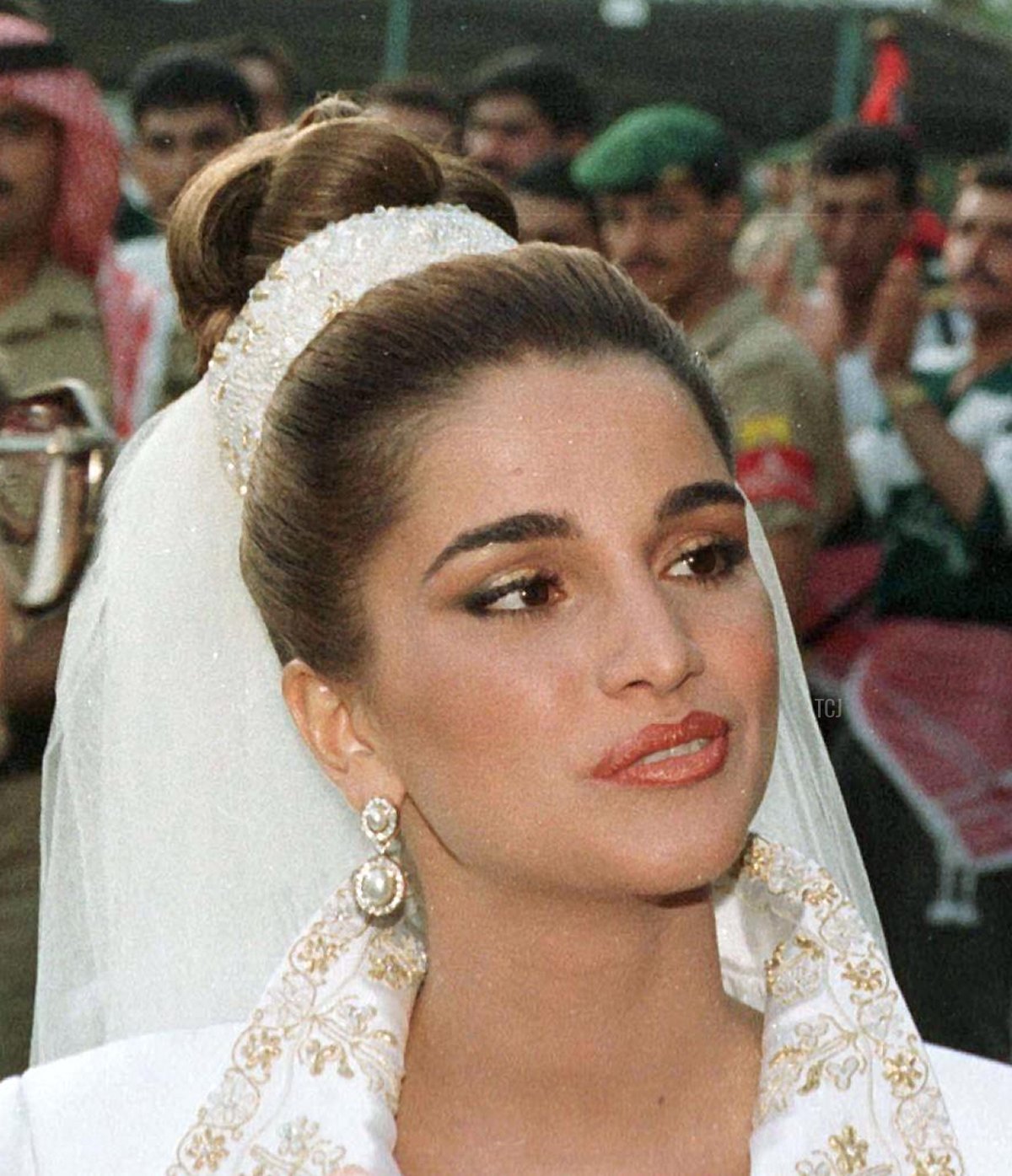
With her wedding gown and veil, Rania wore a beaded headpiece rather than a tiara, as well as a pair of diamond and pearl drop earrings. She may not have become a crown princess on her wedding day, but following her husband’s accession in February 1999, Rania was proclaimed Queen of Jordan on March 22, 1999. King Abdullah III has now reigned for nearly 25 years, and the couple have four children: Crown Prince Hussein, Princess Iman, Princess Salma, and Prince Hashem.
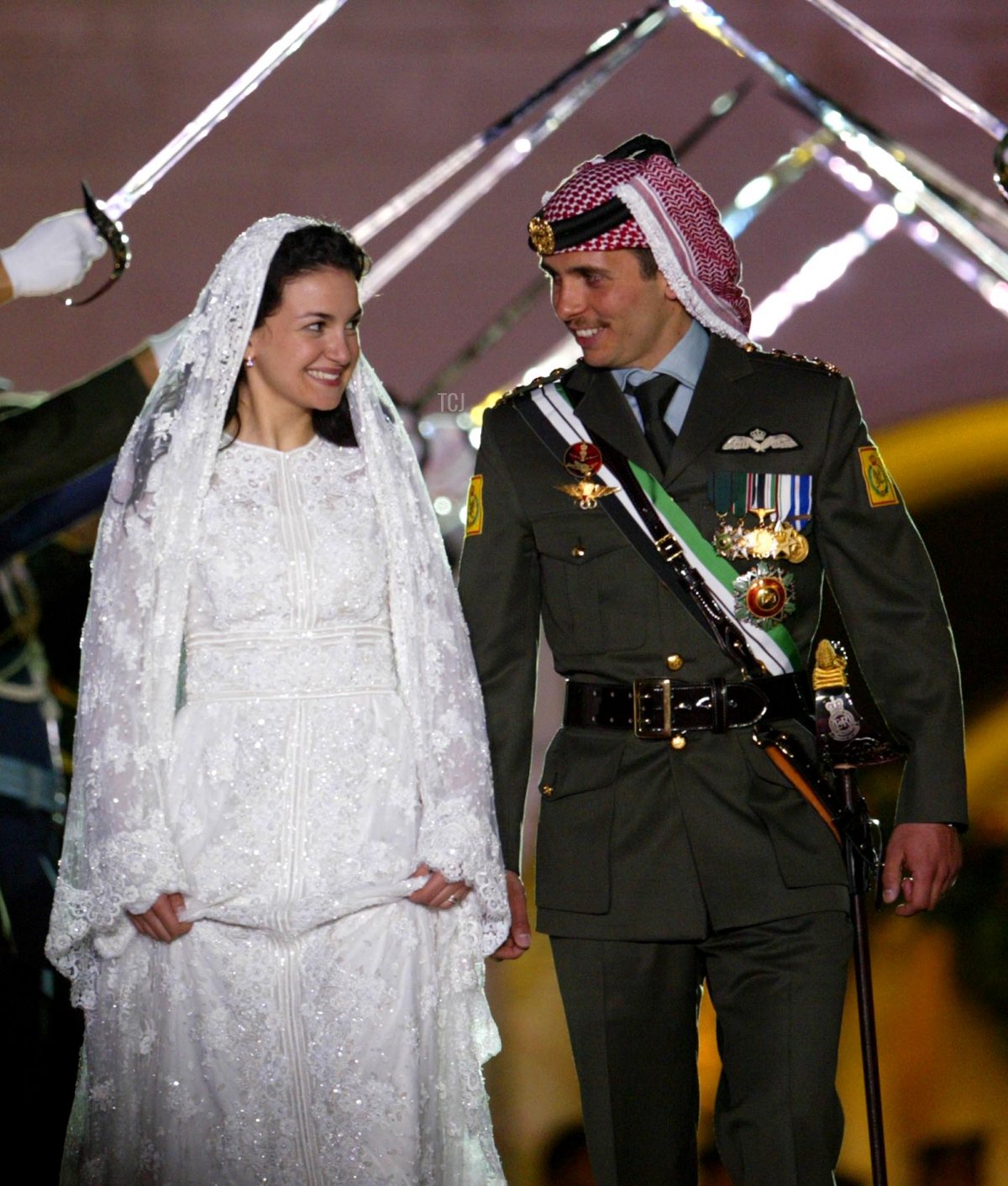
When King Abdullah II ascended to the throne in 1999, he named his half-brother, Prince Hamzah (the son of King Hussein and Queen Noor) as his heir. The decision was reportedly made to fulfill a wish of the late King Hussein. In August 2003, Crown Prince Hamzah, 24, married a second cousin, 22-year-old Princess Noor bint Asem. Their marriage was publicly celebrated at Zahran Palace in Amman on May 27, 2004, with royals from several other countries present. Princess Noor kept her jewelry simple, letting her glittering wedding gown and veil do most of the sparkling.
On November 28, 2004, King Abdullah announced that Prince Hamzah was no longer heir to the throne. The role of crown prince automatically reverted to Abdullah’s elder son, Prince Hussein, a decision that Abdullah confirmed with a proclamation five years later. Prince Hamzah and Princess Noor welcomed their only child, Princess Haya, in April 2007. They went their separate ways two years later, and both are now remarried and have children with their second spouses. Prince Hamzah’s story became even more complicated in 2021, when he was placed under house arrest for his alleged involvement in a plot to remove King Abdullah from power.
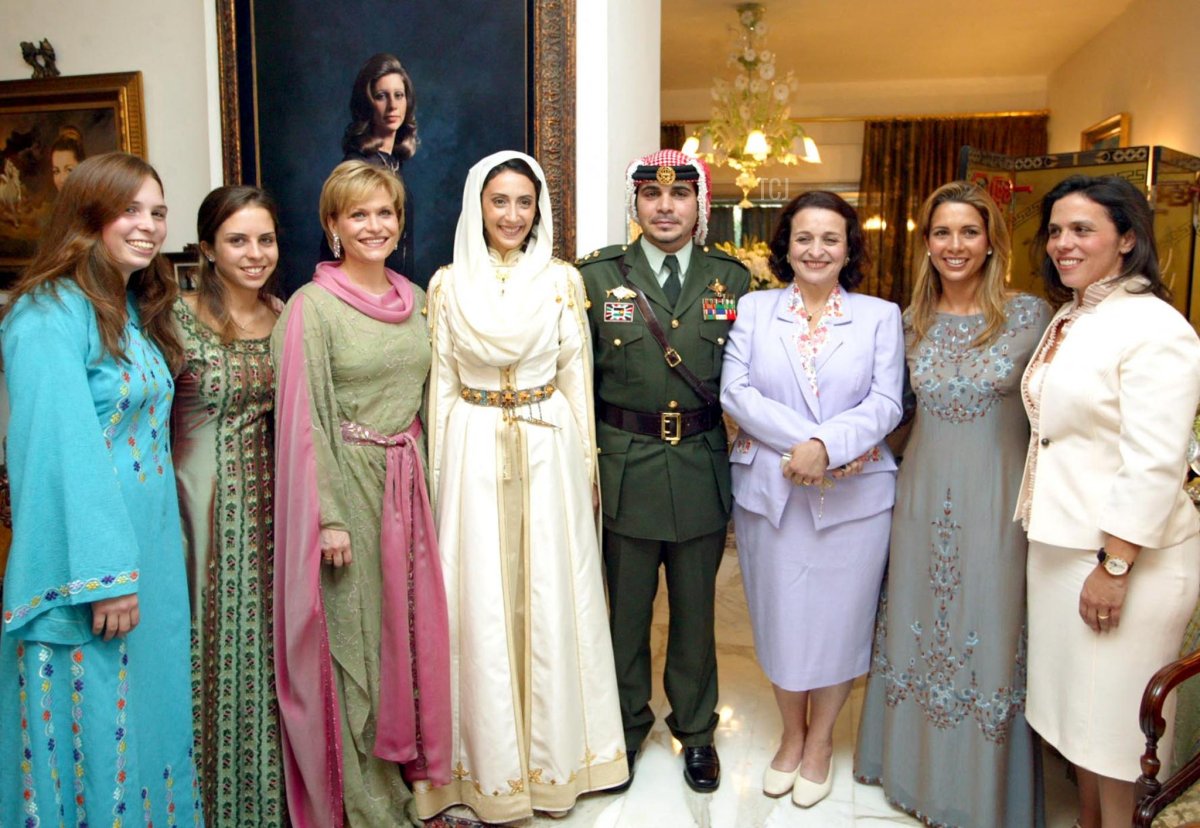
There was another royal wedding celebrated in Jordan in 2004 as well: the nuptials of Prince Ali, son of King Hussein and Queen Alia, and the Algerian-born news reporter and producer Rym Brahimi. In this photo, the newly-married Prince Ali and Princess Rym pose for a photograph with all of his sisters. From left to right: Princess Iman and Princess Raiyah, daughters of Queen Noor; Princess Aisha, daughter of Princess Muna; Princess Rym and Prince Ali; Princess Alia, daughter of Princess Dina; Princess Haya, daughter of Queen Alia; and Princess Zein, daughter of Princess Muna (and twin of Princess Aisha). A portrait of Prince Ali’s late mother, Queen Alia, can be seen in the background.
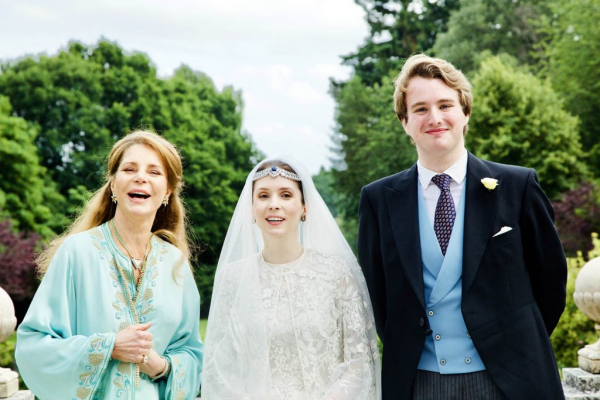
In July 2020, King Hussein and Queen Noor’s younger daughter, Princess Raiyah, was married in a small ceremony at her mother’s home in England. Raiyah and her husband, Ned Donovan, had originally planned to wed in Jordan, but plans had to change because of the pandemic. Raiyah wore a diamond and sapphire headpiece borrowed from her mother for the occasion.
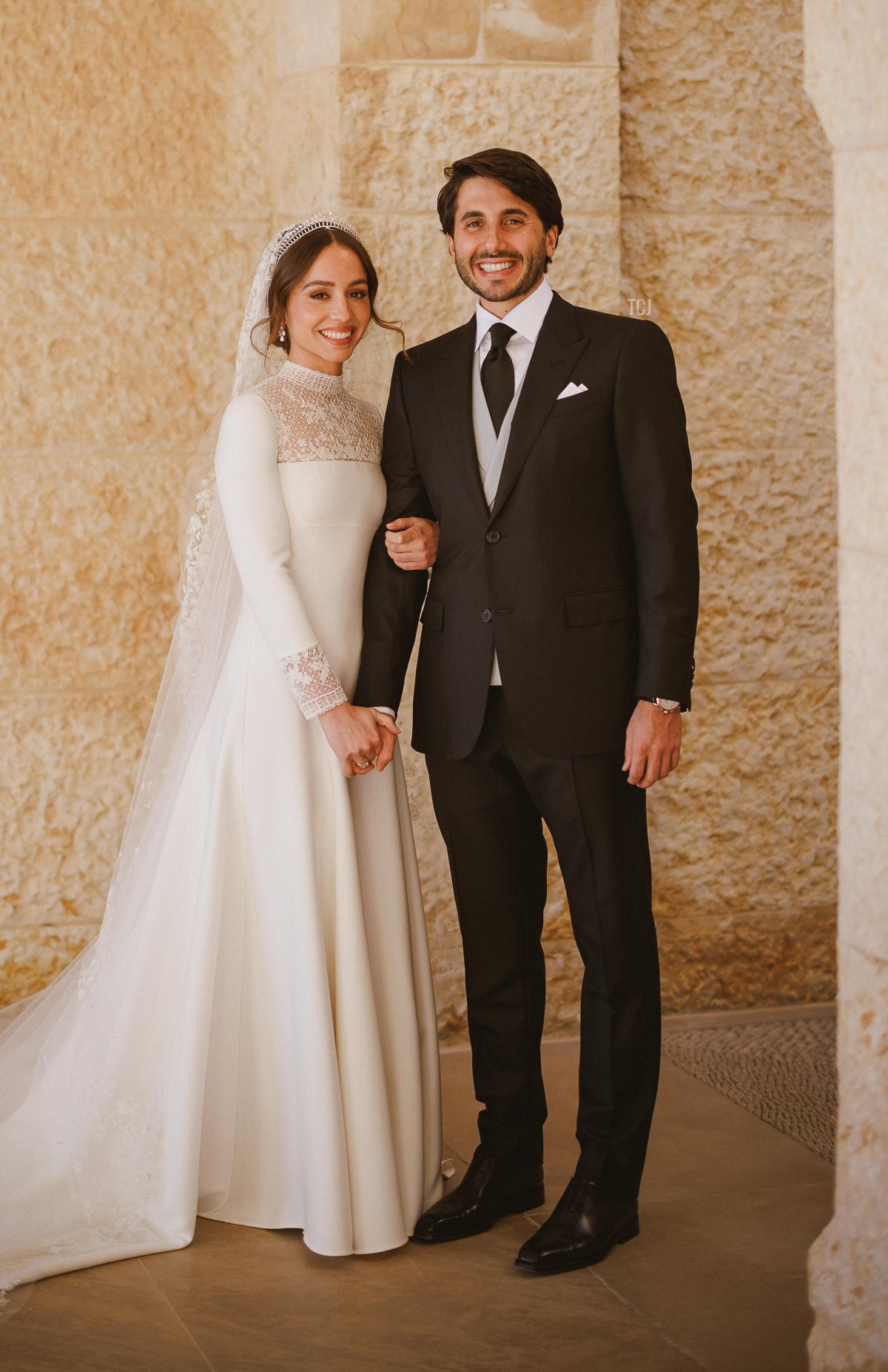
The most recent Jordanian royal wedding took place earlier this year. In March 2023, Princess Iman, the elder daughter of King Abdullah II and Queen Rania, married Jameel Alexander Thermiotis in a grand ceremony in Amman.
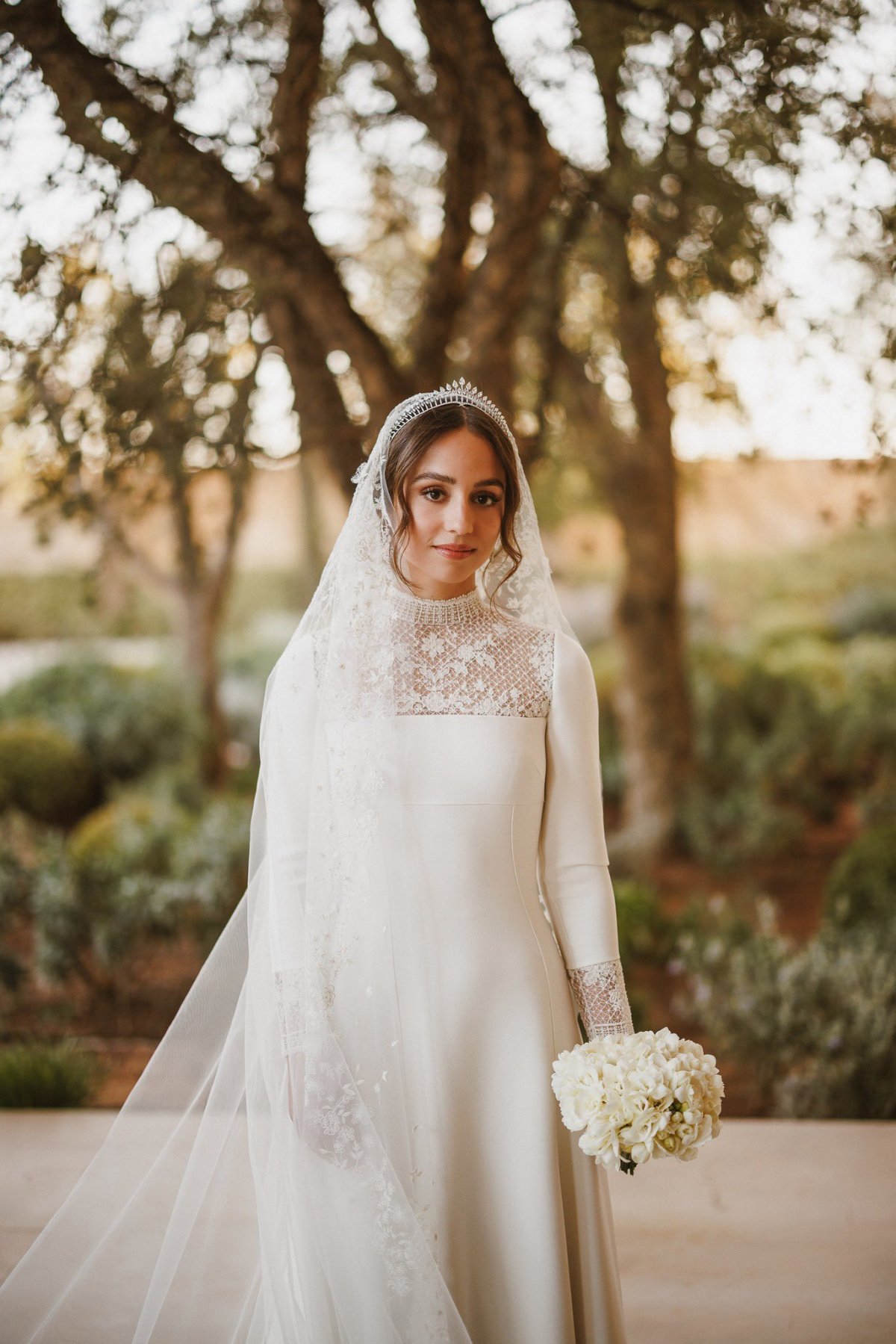
Princess Iman wore a Dior wedding gown for the ceremony.

She added diamond accessories to her ensemble as well, including a Chaumet tiara with a feather motif.
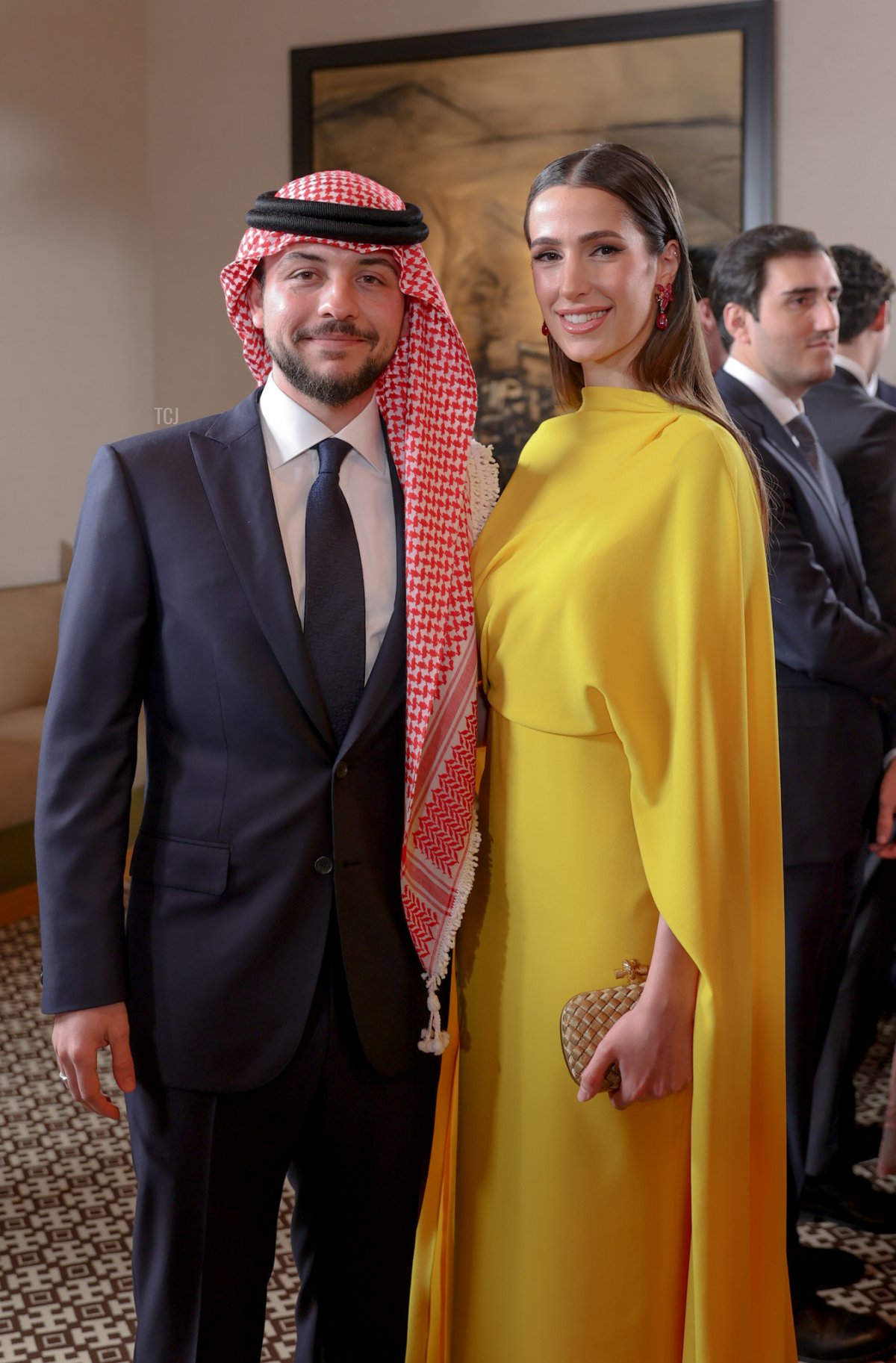
And today in Amman, Crown Prince Hussein will marry his fiancee, Rajwa Al Saif. (I covered the jewels of their engagement ceremony last August.) Will Rajwa wear a tiara for the ceremony? We’ll all have to stay tuned to find out!
Leave a Reply
You must be logged in to post a comment.